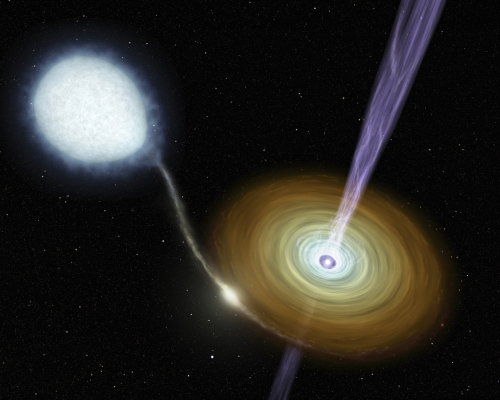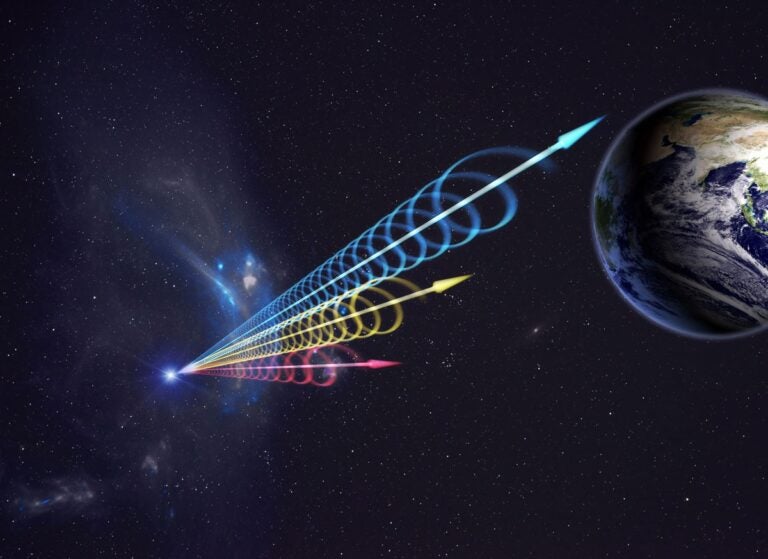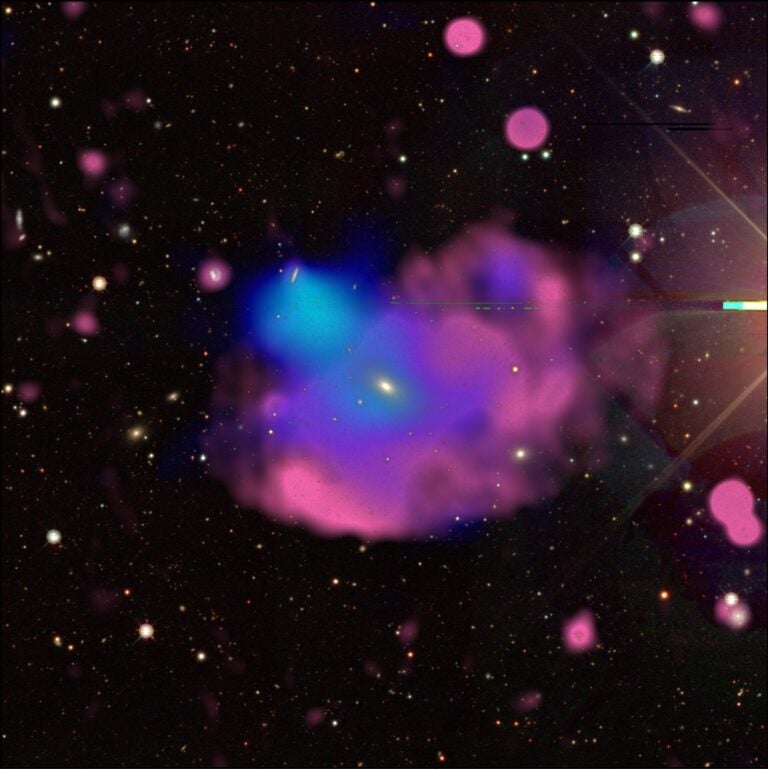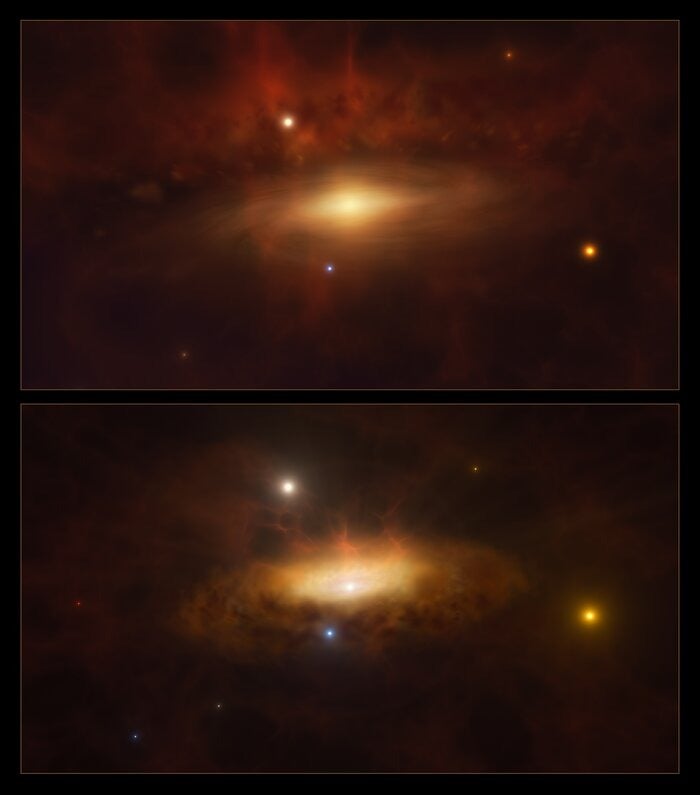Q:How do astronomers calculate the mass of a neutron star or black hole?
A: Astronomers can calculate mass in several ways. The simplest is when the object is part of a binary system. Regardless of the objects in the binary — two stars, a star and a neutron star, a star and a black hole, et cetera — their orbits follow Kepler’s laws of motion, which allow a scientist to calculate mass based on the speeds of the objects and the size of their mutual orbit. Additionally, when two objects such as neutron stars or black holes merge, the gravitational waves they produce tell astronomers the masses of the original objects, as well as the mass of the result their merger leaves behind.
But what about a lone neutron star or black hole? A single neutron star may give itself away as a pulsar. Pulsars are spinning neutron stars beaming out intense radiation along their poles. If these narrow beams happen to point at Earth, astronomers can identify the source as a neutron star. The signals from a pulsar are regularly spaced as the star spins. And some pulsars glitch, which makes them temporarily speed up. Astronomers believe glitches are caused by interactions between material from the neutron star’s core and its crust. Tracking a glitch as it occurs can reveal information about the star’s internal temperature. Work published in Science Advances in 2015 suggests that if researchers know the age of the neutron star, they can use glitches to measure the star’s current internal temperature and compare it with a model of what the neutron star’s interior should look like. The model, in turn, allows researchers to calculate the star’s mass based on its temperature and age.
While it’s not possible to accurately calculate the mass of a lone stellar-mass black hole created by the death of a single star, it is possible to calculate the mass of a galaxy’s central supermassive black hole. That’s because astronomers have observed a link between the mass of a supermassive black hole and the mass of the spheroidal component — the bulge — of the galaxy around it. There is also a link between the motion of the stars in a galaxy’s bulge and the mass of its supermassive black hole. So, astronomers can measure one or both of these quantities to derive the mass of a galaxy’s central supermassive black hole.
In the case of the Milky Way’s supermassive black hole, however, researchers observed the motion of stars around the object over the course of years. This allowed them to use Kepler’s laws to measure its mass: 4.3 million solar masses.
Associate Editor










